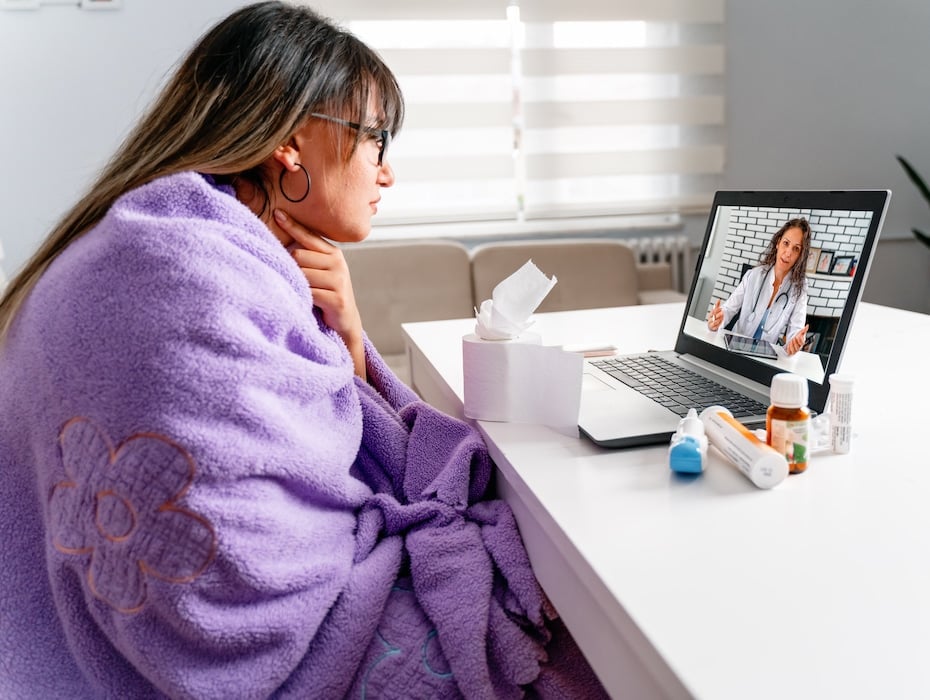Today, more and more healthcare providers are turning to telehealth services to help them meet the rising demand from patients. Moreover, telehealth services offer a prudent solution to mitigate the risk of diseases spread through in-person visits.
Telehealth services make sense in a variety of contexts. We’ve gathered eight telehealth examples to illustrate how telehealth services allow providers to meet patients’ needs now and in the future. Further, to help providers get started with telehealth services, we’re offering RingCentral Office for free.
Example 1: Virtual visits for family physicians
During crisis situations, many healthcare providers close their offices to prevent the further spread of viruses; however, that doesn’t mean they have to stop seeing patients. Telehealth services have an important role to play in ensuring the continuity of care.
Family physicians can hold video visits for patients who need acute care and routine follow-up visits. Video visits allow physicians to see the patients safely so that patients get the care they need without putting anyone’s health at risk.
Download RingCentral’s Telehealth best practices for family physicians one-pager
Example 2: Forward triage for the emergency department
The second telehealth example is forward triage in the emergency department. Healthcare providers in the emergency department are accustomed to performing triage when patients arrive; the concept of forward triage means that providers classify patients by the severity of their case before they even set foot in the hospital.
Here’s how forward triage works: a patient calls the emergency department and uses the camera on his or her smartphone or computer’s webcam to hold a video conference with the staff performing triage. The staff member can see as well as hear the patient and can determine whether the patient is suffering from dangerous symptoms such as respiratory distress.
Example 3: Telehealth services within the emergency department
Let’s say that forward triage identifies a patient with a contagious, potentially deadly disease. The patient needs treatment, yet presents a serious health risk to everyone else at the hospital. Telehealth services can play a role in this situation, too.
Once at-risk patients come to the hospital, they can be isolated in a room with a tablet. Such a patient can have a virtual visit with a healthcare provider, which significantly reduces the provider’s risk.
Example 4: Virtual consultations with other providers
In times of healthcare crisis, the need to consult with other members of a healthcare team is critical. Yet, it also creates a risk; no one wants to spread contagions and sicken their colleagues. Telehealth services allow providers to consult with one another safely.
A primary care physician, for example, could hold a video conference with the orthopedic surgeon that operated on his patient. The doctors could loop in the nurse who’s tending to the patient post-op, and then bring in the physical therapist who will be working with the patient in rehab. No one is exposed to contagious viruses, yet there’s still coordination of care, which leads to better outcomes for patients.
Example 5: Mental healthcare visits
Mental health is a vital part of overall patient wellbeing. In times of healthcare crisis, anxiety levels spike, and depression and fear become part of daily life. Patients who are working with mental healthcare professionals don’t have to give up their treatment, though; telehealth therapy can be an option.
Patients can have telehealth therapy over the phone or through a video conference. Telehealth therapy gives patients the opportunity to see their healthcare providers and discuss their issues without compromising anyone’s health. Moreover, telehealth therapy is built on a secure platform, so neither patients nor providers have to worry about confidentiality concerns.
Example 6: Rural healthcare
Even when there isn’t a healthcare crisis, patients living in rural settings still don’t have the same access to healthcare providers that their peers in cities and suburbs do. It might take them the better part of a day to travel to a healthcare provider’s office. Telehealth services ease the burden for rural patients.
Instead of having to travel hours to see a healthcare provider, patients can see their provider in the comfort of their home with a video visit. Telehealth services preserve the continuity of care, make it more convenient for rural patients, and reduce the risk of spreading illnesses.
Example 7: Load balancing
Healthcare crises can impact some areas more heavily than others. It might be that Oregon doesn’t have a high infection rate, while New York City is hit hard. Telehealth services allow healthcare providers to balance the load more effectively.
Here’s how it can work: healthcare providers in Oregon can provide telehealth services to patients in New York City, whose healthcare providers are tending to other ill patients. The providers in Oregon keep the New York City providers up-to-date with what’s happening with their patients so that continuity of care is preserved.
Example 8: Treating high-risk patients virtually
Another telehealth example is to treat high-risk patients virtually. Patients with chronic conditions such as diabetes or heart disease shouldn’t put their health at risk by coming into a healthcare provider’s office, where they could catch whatever other patients have and further endanger their health. The elderly are also in the high-risk category, as many senior citizens have chronic health conditions.
Telehealth services such as video visits can keep these patients out of waiting rooms, while still providing the medical care they need. By seeing patients virtually, healthcare providers prevent them from slipping through the cracks and turning to the emergency department when their healthcare situation worsens.
RingCentral can help you provide telehealth services
Telehealth services play a valuable role in healthcare crises, ensuring continuity of care and reducing the risk of spreading contagious diseases. However, telehealth services are not just for times of crisis; providers can and should use telehealth services to meet patient demand on a regular basis.
RingCentral provides a platform that enables telehealth services for many healthcare organizations. See how cloud communications can transform your healthcare organization. Request a demo today.
Originally published Jun 25, 2020, updated Apr 23, 2021





